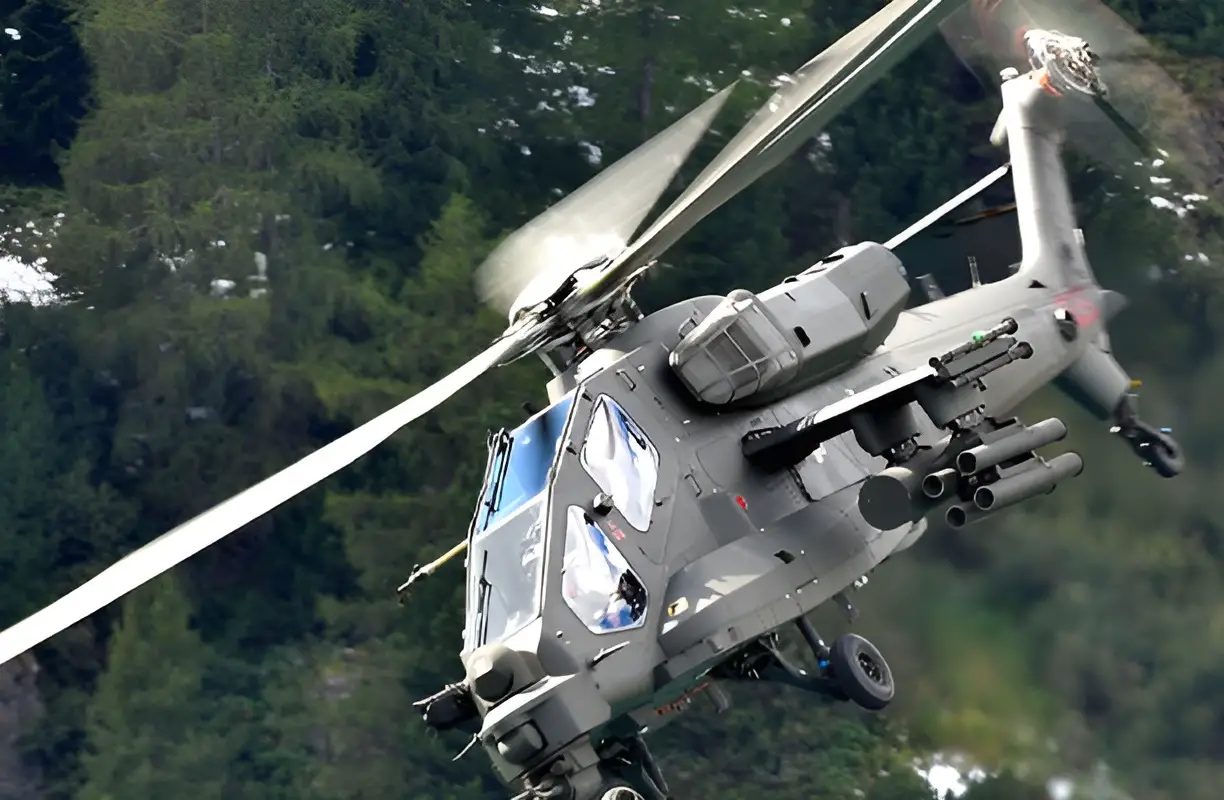The Italian Army’s aviation capabilities took a giant leap forward with the operational debut of its new AW249 Fenice attack helicopter during the “Stella Alpina 2024” exercise, held at Lake Fedaia in Trento on September 18, 2024. This marked the first time the AW249 was integrated into a live operational scenario, signaling a pivotal moment for Italy’s defense modernization program and setting a new standard for future combat operations. The AW249 Fenice is not just another helicopter—it is the result of cutting-edge innovation and a significant collaborative effort between the Italian Ministry of Defense and Leonardo, one of the world’s leading aerospace and defense companies. Designed to meet the evolving challenges of modern warfare, the AW249 is a multi-domain combat platform optimized for maximum operational flexibility, technological superiority, and mission effectiveness.
As a pre-production model, the AW249’s participation in the Stella Alpina exercise was a crucial test of its performance in real-world conditions. The helicopter was integrated into the operation’s tactical bubble, a controlled space where multiple platforms and assets operate in synchronization. This exercise required not only air and ground coordination but also integration with advanced technologies such as remotely piloted systems, cyber and electromagnetic assets, and battlefield communications. The AW249 is designed for these complex multi-domain scenarios, which increasingly require high levels of interoperability and information sharing. It embodies the concept of the future battlespace, where data integration across various platforms—whether in the air, on the ground, or even in cyberspace—can determine mission success. This new helicopter excels at gathering, processing, and disseminating information from multiple sensors, providing commanders with an unparalleled situational awareness and decision-making edge.

At the heart of the AW249’s capabilities is its advanced digital architecture, designed to enable full interoperability with other air and ground assets. The helicopter’s open-systems architecture allows seamless integration with unmanned systems, air-launched weapons, and various sensors, making it a versatile tool for both offensive and defensive operations. The AW249 can share data in real time with other platforms, enhancing mission coordination and battlefield effectiveness. One of the key innovations of the AW249 is its net-centric capability. This means that it can function as part of a broader network of platforms, exchanging information in real time to enhance operational decision-making. In addition to traditional combat roles such as close air support, air interdiction, and aerial escort, the AW249 is equipped for advanced missions such as intelligence, surveillance, and reconnaissance (ISR), making it a force multiplier in multi-domain operations.
The AW249 also boasts an impressive suite of survivability features, designed to protect both the aircraft and its crew in hostile environments. These include advanced passive and active self-protection systems, crashworthiness features that meet the highest standards of the European Defence Agency (EDA), NATO, and EASA, as well as ballistic-tolerant fuel tanks and armored seats. The helicopter is designed to operate in high-risk environments while maintaining low detectability and maximum resilience. A standout feature is the run-dry main gearbox, which can continue functioning for up to 50 minutes after losing lubrication—providing a significant advantage in emergency situations. Additionally, the helicopter’s enhanced crashworthiness and low radar signature ensure that it can withstand the rigors of combat while remaining difficult to detect and target.

With a maximum take-off weight of 8.3 tonnes, the AW249 combines agility, speed, and endurance, making it well-suited for a wide range of combat missions. Its weapon system is highly flexible, incorporating a variety of armaments that allow the helicopter to engage both aerial and ground targets with precision. The platform is equipped with 70mm guided and unguided rockets, air-to-air infrared guided missiles, air-to-ground radio frequency or fiber optic guided missiles, and a highly effective 20mm gimballed gun. This array of weaponry ensures that the AW249 can deliver devastating firepower across a wide range of operational contexts. The AW249’s superior flight performance is another key factor in its mission success. It excels in nap-of-the-earth flight, allowing it to fly close to the ground and evade enemy radar. This, combined with its advanced sensor fusion capabilities, enables the helicopter to operate in degraded visual environments—such as poor weather or night conditions—without compromising mission effectiveness. These features provide the AW249 with a significant tactical advantage, allowing it to carry out precision strikes while remaining elusive to enemy defenses.
The AW249’s role in the Stella Alpina 2024 exercise is just the beginning of its journey as a game-changing asset for the Italian Army and potentially other NATO forces. The helicopter’s ability to seamlessly integrate into multi-domain operations—whether alongside manned aircraft, uncrewed systems, or ground units—positions it as a critical enabler of future military strategies. Its design reflects the increasing importance of information dominance and cross-platform collaboration in modern warfare. As threats become more diverse and complex, platforms like the AW249, with their advanced digital capabilities and flexible combat roles, will be indispensable in maintaining operational superiority. In conclusion, the AW249 Fenice represents a step change in military aviation, offering a unique combination of cutting-edge technology, survivability, and operational flexibility. Its first operational exercise marks a significant milestone in its development, showcasing its potential to revolutionize combat helicopter operations in multi-domain contexts. With the AW249, Italy is setting the stage for the future of warfare, where information, adaptability, and interoperability are key to success on the modern battlefield.
One of the Italian Army’s (@Esercito) new #AW249 exploration and escort helicopters participated today for the first time in an operational exercise, #StellaAlpina 2024, at Lake Fedaia (Trento, Italy). The rotorcraft is a pre-production model currently involved in AW249 programme… pic.twitter.com/PsEO7rS2vA
— Leonardo Helicopters (@LDO_Helicopters) September 18, 2024















